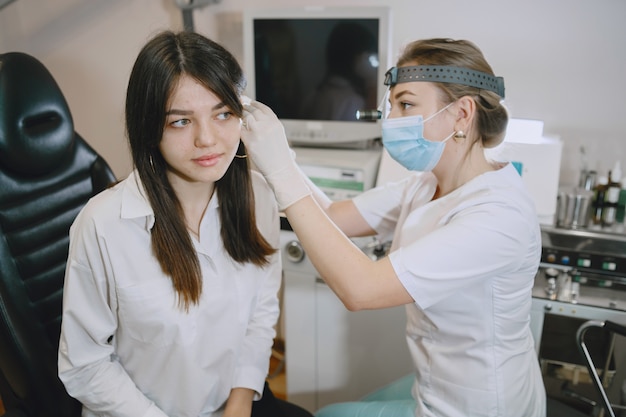
There has been a sharp rise in cases of glaucoma, a serious eye condition, emphasizing the need for greater global awareness. The National Eye Institute is leading efforts to educate people about glaucoma, as early detection is crucial in preventing its progression and managing this major threat to eye health.
Glaucoma refers to a group of diseases that damage the optic nerve, which carries visual information from the eye to the brain. As it progresses, it disrupts this process, leading to blurry vision, and in severe cases, blindness if untreated. Known as the “sneak thief of sight,” glaucoma often shows no symptoms until significant eye damage has occurred, making early detection vital. Elevated eye pressure is the main risk factor, though not everyone with high eye pressure will develop glaucoma.
This condition can occur in anyone, but people over 40 are at greater risk. Regular eye exams, starting at age 40 or 45, are essential, even if no symptoms are present. Once glaucoma damages the optic nerve and vision is lost, it cannot be restored, highlighting the importance of early diagnosis.
### Symptoms of Glaucoma
In its early stages, glaucoma typically has no symptoms. As the condition worsens, vision may become blurry and fluctuate, though many are unaware they have it until significant damage has occurred. Common symptoms of advanced glaucoma include tunnel vision, seeing halos around lights, and even complete vision loss. Regular eye checkups are critical to catching the disease early and limiting its impact.
### Types of Glaucoma
Glaucoma is primarily categorized into two types:
1. **Open-Angle Glaucoma**
This is the most common form, accounting for 90% of cases. It develops without noticeable symptoms and is caused by the eye failing to drain fluid efficiently. As this “silent thief of sight” progresses, irreversible optic nerve damage occurs, making it a chronic condition.
2. **Angle-Closure Glaucoma**
Less common but more severe, this form occurs when something blocks the drainage angle inside the eye, preventing proper fluid flow. Known as acute angle-closure glaucoma, it requires immediate medical attention. Its symptoms include sudden vision disturbances, halos around lights, redness, eye pain, nausea, and even vision loss.
### Causes of Glaucoma
Glaucoma develops when excess fluid builds up in the eye, increasing pressure. This can happen when the drainage system becomes blocked or the eye produces too much fluid. In some cases, reduced blood flow to the optic nerve, trauma, or genetic factors may contribute to the condition.
### Risk Factors
Several factors can increase the likelihood of developing glaucoma:
– **Eye Injuries or Conditions**: Chronic eye inflammation, trauma, or thin corneas can raise the risk.
– **Health Issues**: People with diabetes, high blood pressure, or heart disease have a higher chance of developing glaucoma.
– **Certain Medications**: Long-term use of corticosteroids can increase the risk of secondary glaucoma.
– **Ethnicity**: African and African-American individuals are at higher risk for glaucoma, particularly early in life. Asians may be more prone to angle-closure glaucoma, while Japanese individuals are more likely to develop low-tension glaucoma.
– **Age**: Glaucoma risk rises significantly after age 60 and, for African-Americans, after age 40.
– **Family History**: A history of glaucoma in close relatives increases the likelihood of developing the disease.
### Diagnosis
Eye specialists use various tests to diagnose glaucoma and assess its severity:
– **Tonometry**: Measures eye pressure.
– **Perimetry Test**: Checks for vision loss or peripheral vision issues.
– **Pachymetry**: Determines corneal thickness, as thinner corneas may indicate higher risk.
– **Gonioscopy**: Examines the drainage angle in the eye to determine if it’s open or closed.
– **Optic Nerve Tests**: Scans and visual field tests help detect damage to the optic nerve.
Doctors also consider medical history and family glaucoma cases to better understand each patient’s risk.
### Glaucoma Treatment
The primary goal of treatment is reducing eye pressure. Common methods include:
– **Eye Drops**: These either reduce the production of eye fluid or increase its drainage. Possible side effects include redness, irritation, and blurred vision. Always inform your doctor of other health conditions or medications to avoid complications.
– **Laser Surgery**: This can enhance fluid flow or remove blockages. Procedures include:
– *Trabeculoplasty*: Opens the drainage area.
– *Iridotomy*: Creates a small opening in the iris to improve fluid drainage.
– *Cyclophotocoagulation*: Reduces fluid production in the eye.
– **Microsurgery (Trabeculectomy)**: Involves creating a new drainage channel, sometimes with a tube implant. While effective, it carries risks such as infection, bleeding, or even vision loss in rare cases.
– **Combination Treatments**: Doctors may combine approaches like eye drops, laser surgery, or microsurgery, depending on the severity of the case. For congenital glaucoma (present at birth), surgery is usually the first step due to pre-existing drainage problems.
### Can Glaucoma Be Prevented?
While glaucoma can’t be entirely prevented, its progression and effects—such as vision loss—can often be minimized. Here’s how:
– **Regular Eye Exams**: Adults over 40 should see an eye doctor every 2–3 years, transitioning to annual exams by age 60. Early detection is critical.
– **Protect Your Eyes**: Avoid injuries by using protective gear during high-risk activities like sports.
– **Eye Exercises**: Regular eye exercises can reduce pressure and enhance overall eye health.
Ultimately, awareness and timely action are the best defenses against glaucoma. By staying informed and proactive, you can safeguard your vision and overall eye health.